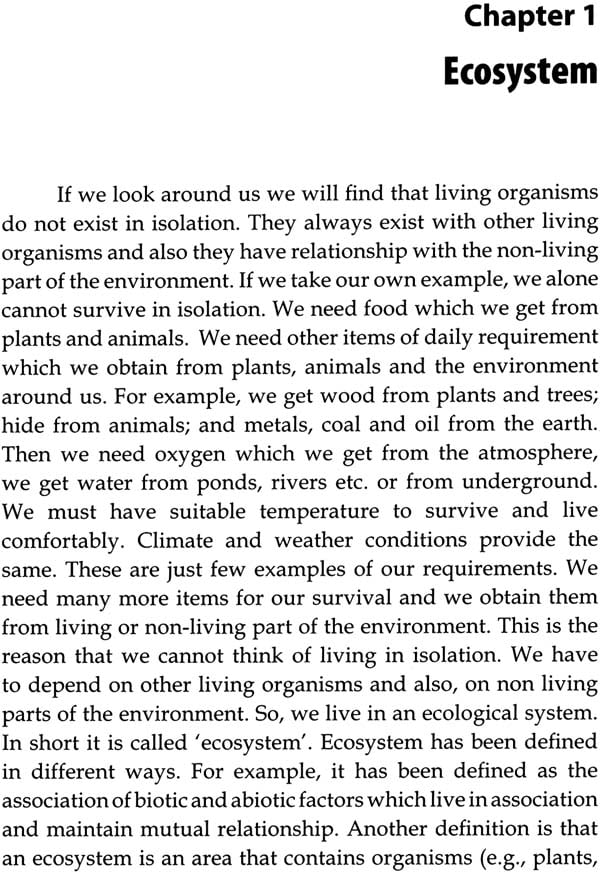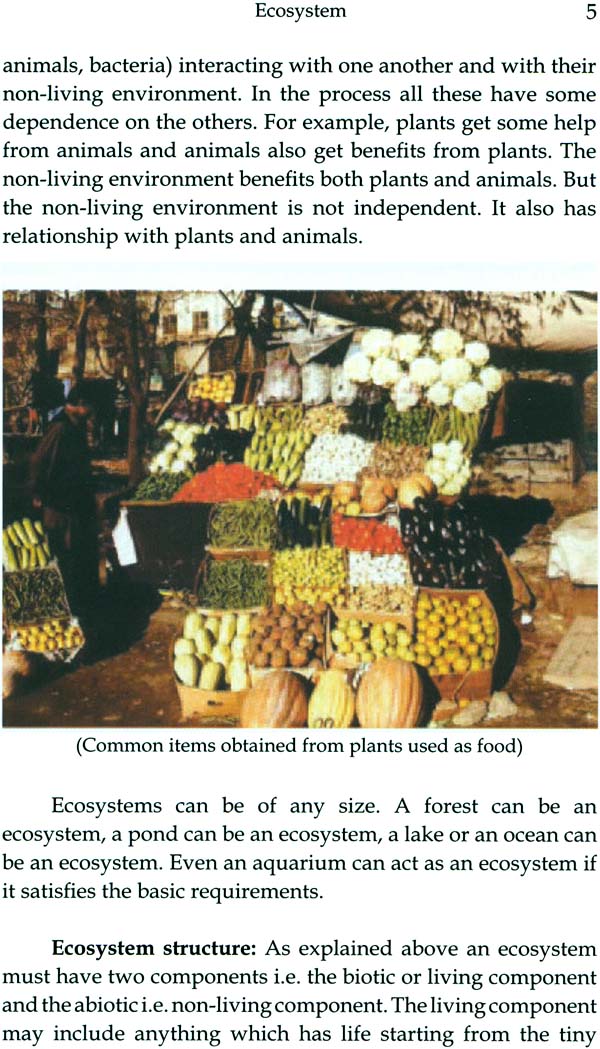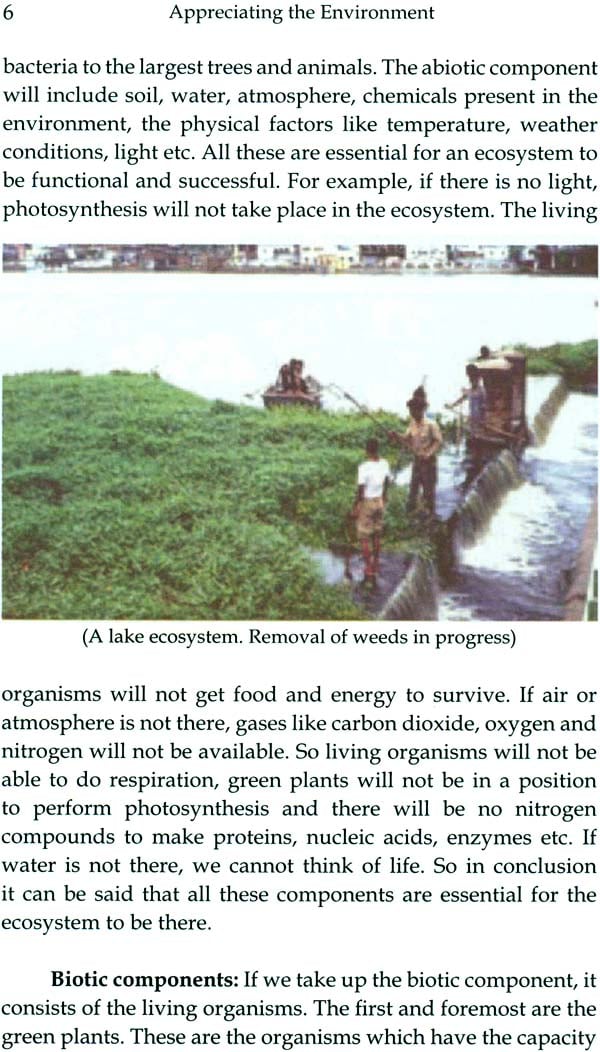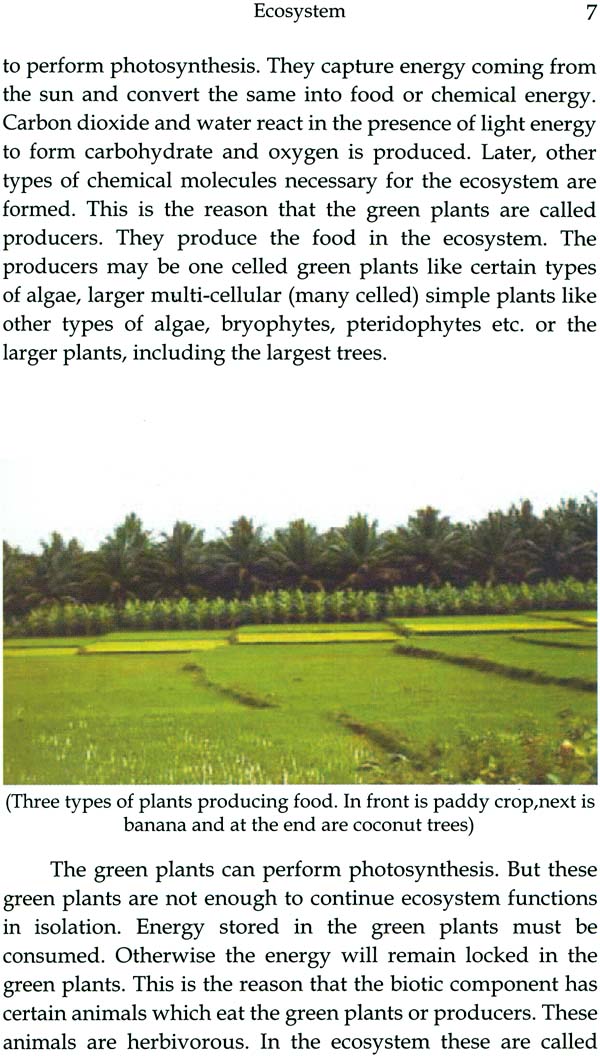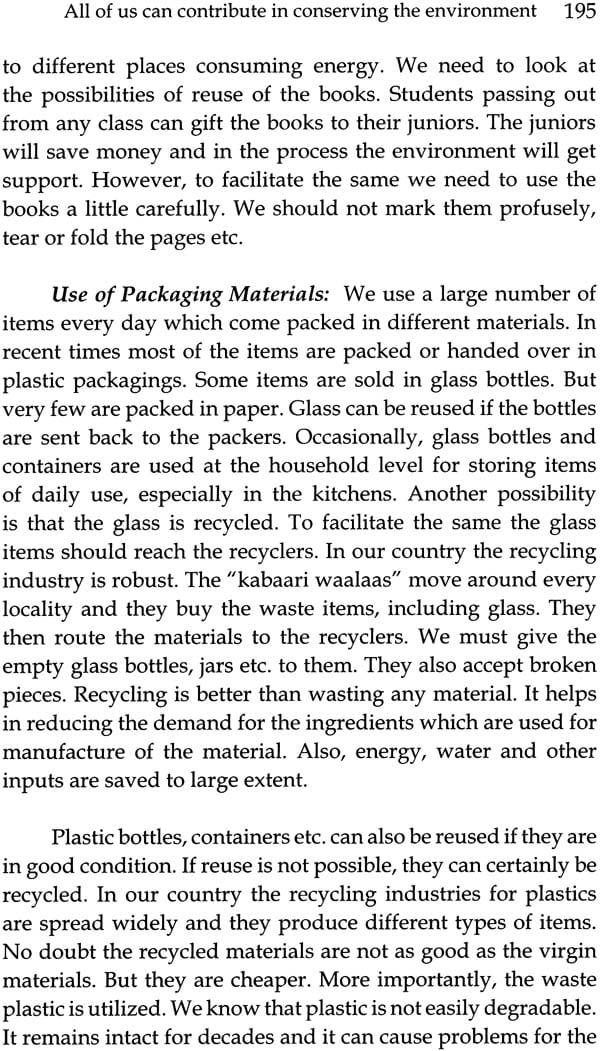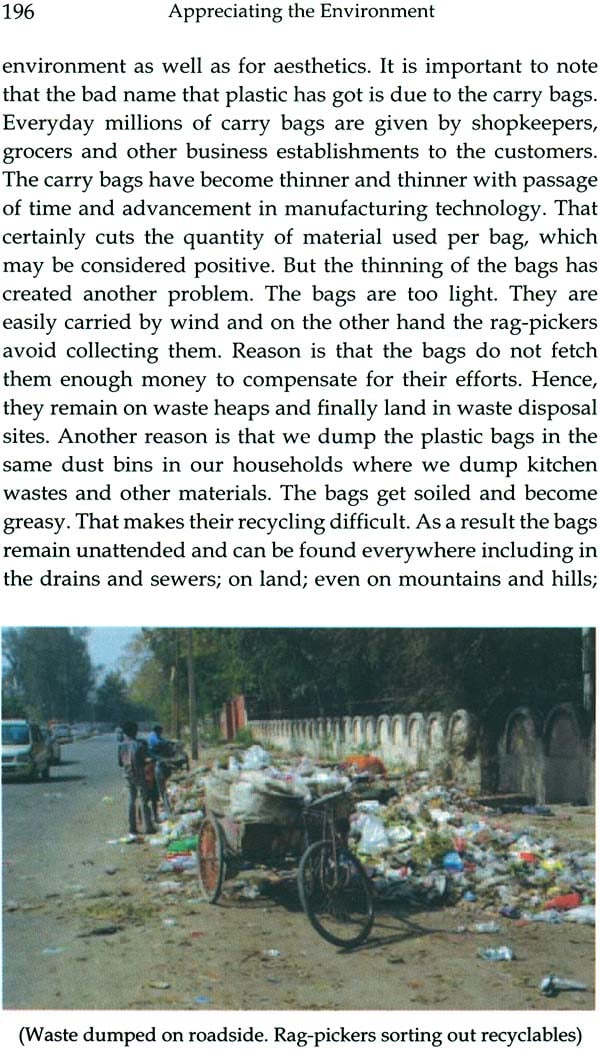
Appreciating The Environment
Book Specification
| Item Code: | NAL289 |
| Author: | M.A. Haque |
| Publisher: | Vigyan Prasar |
| Language: | English |
| Edition: | 2013 |
| ISBN: | 9788174802286 |
| Pages: | 218 (Throuhouts color Illustration) |
| Cover: | Paperback |
| Other Details | 8.5 inch X 5.5 inch |
| Weight | 380 gm |
Book Description
Environment concerns everyone. David Brower has written: “Wild place are where we began. When they end so do we”. Wild areas are only one amongst several components of the environment. If they are so important it is not difficult to realize, how important is the total environment. We are degrading the environment so much that our own existence is in jeopardy. Wildlife is constantly under threat. So many species of animals and plants are extinct. List of organisms which are under threat is long. Pollution is widespread and each one of us feels the impact, directly or indirectly. Even deepest oceans and the highest mountain peaks are not safe.
This book is for all those who are interested in understanding the environment. It deals with different facets of the environment without quoting much statistics. Things have been explained in simple language to suit every reader. Even those reader who are not with science background will find the book useful. The book is also expected to make the readers interested in contributing at their own level n the important task of conservation and protection of the environment.
Dr. M.A. Haque was born at Munger, Bihar. He received Gold Medals in B.Sc. Hons. and M.Sc. He did M.Phil. and Ph.D. from the School of Environmental Sciences, JNU, New Delhi in 1977 and 1981. He was teaching in India and abroad till 1987. Then he joined the Ministry of Environment & Forests and he retired from there as Director (Scientific) in 2010. Central Administrative Tribunal has ordered his promotion as Adviser with retrospective effect. He has been member of several Committees related to Raj Bhasha, Science, Environment, and Education. He is visiting faculty to several Universities, Management Institutes and Professional Institutes. He has interest in photography as well.
Four books and about 500 papers and articles in Hindi, Urdu and English are to his credit. He has scripted a number of documentaries and devised, scripted large number of TV and Radio programmes. During 2007-2008, Dr. Haque was UNDP Adviser in Afganistan.
Environment is a matter of global concern. During the last two centuries with unprecedented growth inhuman population, advancements in the fields of agriculture, industry, transport, communication and in various other fields, the environment has suffered like never before. There are warnings that earth is being pushed fast towards environmental catastrophe. Scientists have started saying that if the trend is not reversed soon the earth's environment will deteriorate beyond repair. It will be impossible for the earth to remain livable for humans and also for other types of living organisms.
Under the circumstance it is essential that each of us understands about the components of the environment, the threats being faced by the environment and the ways in which the threats can be dealt with or at least minimized to the extent that we get time to implement long term solutions.
Keeping these aspects in mind this book has been written. The book provides information about the environment, the threats faced by the environment and suggestions about how the threats can be minimized, if not completely mitigated. That is why the book has been written in a manner that even those readers who are not from the science background can also use it easily and enjoy the contents.
The author has used information gathered from different sources in preparation of the book. He is indebted to all those sources without naming them. Author has used a large number of relevant photographs from his own library to make the book interesting and informative. It is expected that the book, although not voluminous will serve its purpose.
The author desires to thank Vigyan Prasar for supporting publication of the book.
Nature supports very large numbers of components. Some of them are living while others are non-living. The plants, animals, microorganisms etc. are the living organisms. Land, water, atmosphere, soil, rocks etc. are non-living entities. In addition to these, nature also supports climate, weather conditions, temperature etc. It is not possible to physically measure these. But we can perceive them as there are frequent changes in these components. For example, after one season another season comes. The weather conditions of a place change from time to time. Similarly, plants are produced from seeds. They grow and then produce flowers and seeds and then die. All these processes continue. Still the balance is maintained. If there is a forest, it remains a forest even when some trees die every year. Similarly, water evaporates from the oceans, lakes, rivers, ponds, soil etc. But they never become totally dry. Nature has the arrangement to bring back water in the form of rain, snow, hail etc. The balance is maintained. In a pond there are plants which are eaten by small animals and fishes. The animals and small fishes are eaten by larger fishes or other animals. The large fishes are eaten by some other animals or by us. But it never so happens that the pond becomes empty of fishes or plants. This is so because nature maintains balance. Whatever is used is recycled and brought back. This is called cycling of materials. Same way energy is also recycled and balance is maintained. We eat food to get energy. Energy in all the food comes from the sun. We cannot use the energy coming from the sun as food. So nature has produced green plants which have a special pigment called chlorophyll. With the help of chlorophyll the plants do photosynthesis. As a result the sun's energy is converted into food. When we eat food, we get the same energy. We use the energy for building our body (tissues), for our movements, for working and so on. Same way other organisms use food. Purpose is the same i.e. to get energy. Only the forms of food differ. Some eat plants, some eat animals and some eat those animals which eat other animals. But we find that the population of plants, animals etc. continue to be maintained. Reason is that nature maintains balance. We should remember that the life has been certainly present on the earth for about 600 million years. This estimation is based on the discovery of fossil remains of animals dating back to about 600 million years. It is quite likely that life was in existence even before that. But we do not have fossil records for the earlier period. It is also to be understood that from the time life came into existence it has not been a smooth continuation. There have been instances of mass extinctions (disappearances). The process of extinctions led to disappearance of entire or most of the life on earth present at the time. Five such mass extinctions have been identified so far. There is possibility that evidences for more may be discovered in future. The first mass extinction is estimated to have taken place around 450 million years ago. It is estimated that the extinction which took place around 275 million years ago was the most devastative (destructive). Around 95 percent of species of living organisms present at the time was lost. The extinction which took place last, i.e. about 65 million years ago, is well known. Dinosaurs disappeared from earth during the time. Even with such disturbances life has been continuing and blooming on earth. Reason is that nature always supports balance. There is balance between living and non-living components. So, life continues and also, with time it has become diverse (varied).
| Preface | vii | |
| Section 1: | Balance of Nature | |
| Introduction | 1 | |
| 1 | Ecosystem | 4 |
| 2 | Energy flow in ecosystem | 16 |
| 3 | Contribution of ecosystems in maintaining balance in nature | 21 |
| 4 | Adaptations in plants and animals for survival in different types of environment | 26 |
| Section 2: | Impact of Population on Environment | |
| Introduction | 42 | |
| 5 | Impact of Population growth on ecosystems, human settlements, land distribution | 43 |
| 6 | Impact of Population growth on common facilities and civic services | 54 |
| 7 | Growth in consumption | 61 |
| Section 3: | Utilization of Environmental Resources | |
| Introduction | 69 | |
| 8 | Human dependence on environment | 72 |
| 9 | Sources of Energy | 84 |
| 10 | Agreculture and animal husbandry | 91 |
| 11 | Utilization of resources for industry | 101 |
| 12 | Environmental concerns-national and regional | 115 |
| Section 4: | Environmental Problems-Cause and Effect | |
| Introduction | 121 | |
| 13 | Changes in lifestyle and modern societies | 122 |
| 14 | Factors affecting the environment | 133 |
| 15 | Pollution of soil, air and water | 141 |
| 16 | Noise Pollution | 155 |
| 17 | Disasters | 162 |
| 18 | Impact of environmental degradation | 169 |
| 19 | Impact of environm ental pollution on human health | 179 |
| 20 | All of us can contribute in conserving the environment | 187 |
| 21 | Suggestions for further readings | 207 |
